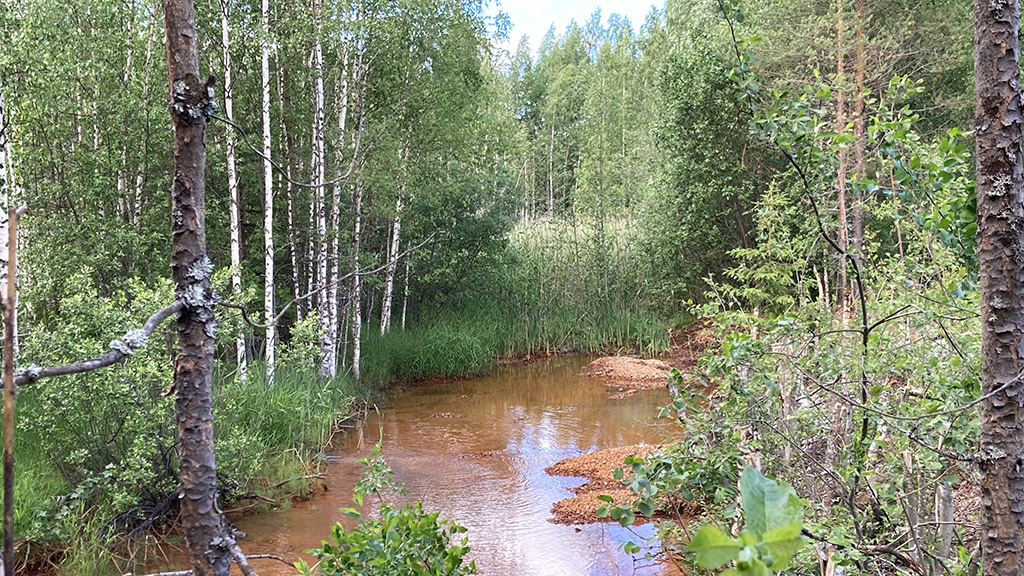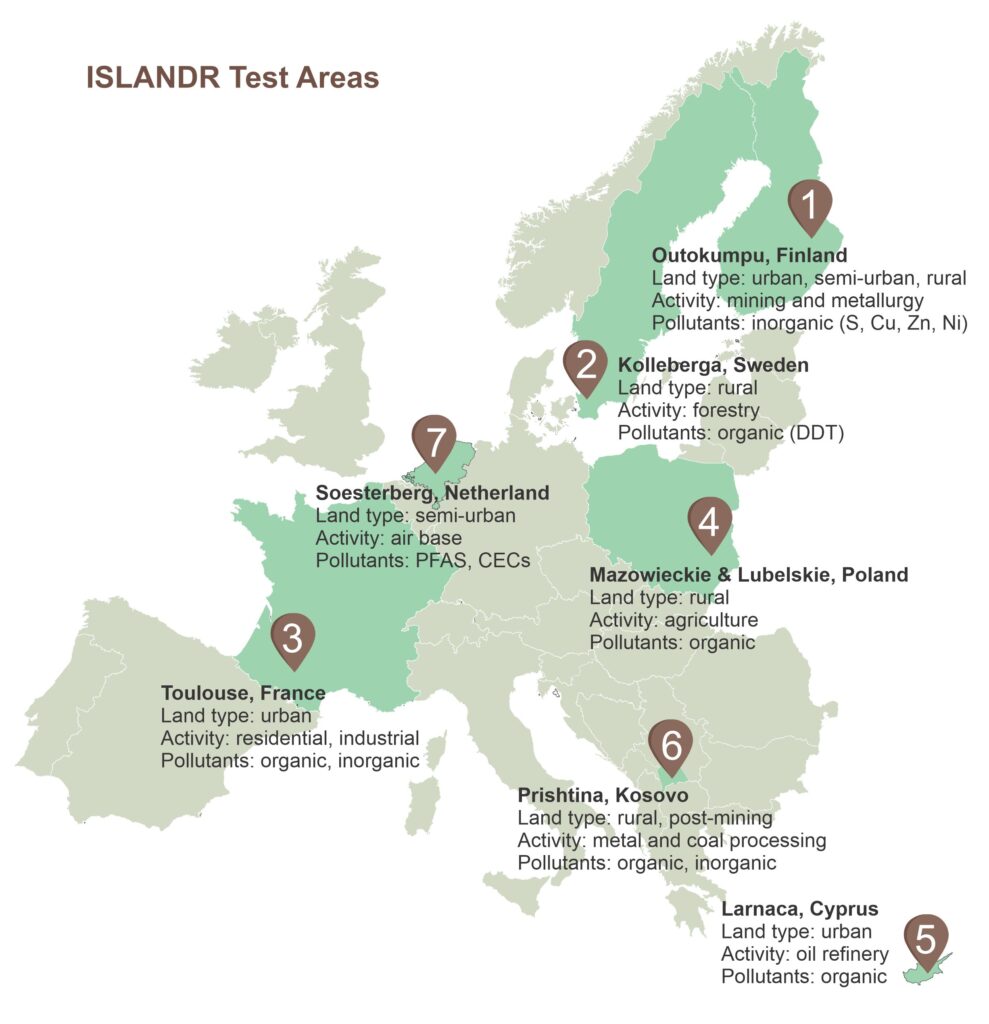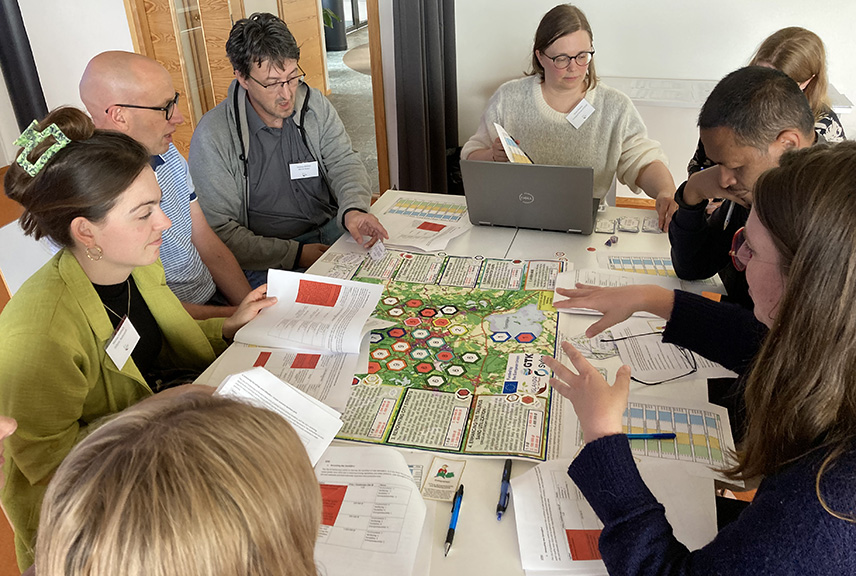Old Mining Towns May Provide New Solutions for the Risk Management of Contaminated Soil
Harmful substances in the soil can migrate to the food chain and pose risks to human health. For reasons such as this, the EU has prepared a proposal for a directive aimed at restoring Europe’s soils by 2050. Old mining towns in Europe can provide solutions for managing contaminated soil.

Article in brief
- The ISLANDR project is developing methods for the delineation of soil contamination, the assessment of risks, and the implementation of sustainable and risk-based land management.
- The historical mining site in the city of Outokumpu in Finland is one of the project’s test areas.
- The project includes wider valuation approach in financial and investment cases.
- New approaches to activating stakeholders and generating solutions have been implemented successfully.
The ‘Information-based Strategies for Land Remediation’ (ISLANDR) project is coordinated by the Geological Survey of Finland GTK and aims to promote Green Deal objectives, especially Zero Pollution, by reducing soil pollution and enhancing restoration.
The project has seven test areas located across Europe, representing different types of contamination and land-use pressure. Numerous historical cities across Europe were originally grown in the vicinity of mining sites. In the ISLANDR project, these areas are represented by the town of Outokumpu, where three mines have operated in the 1900s.

The challenges of an old mining area in Outokumpu
Extraction of copper ore began in the city of Outokumpu over a hundred years ago, and since then, mining and metallurgical industry have developed the economy and employment in the region. The downside is the contamination of soil, surface water and groundwater due to the oxidation of sulphide minerals in extractive waste.
In the early days of mining operations, the metallurgical processes were not effective in enriching valuable metals from the ore. As a result, sulphur and metals ended up also in the tailings, and some of them were spread into the environment with water and dust. Unlike today, the environmental legislation in force at the time did not require proper foundation structures for tailings areas. Instead, the waste was released directly into small lakes. As the soil in Outokumpu is predominantly sandy, not only surface waters but also groundwater was contaminated. Contaminated water from the mining area migrated to Lake Sysmäjärvi. The metal concentrations in the lake sediments indicate that the lake was even more contaminated in the early days of mining operations than today.
Back then, waste rocks and tailings with high sulphur and metal concentrations were used under the streets of Outokumpu. Today, it is known that environmentally harmful material cannot be used in street structures. Indeed, a challenge faced by the city of Outokumpu today is how to remove the contaminated soil and extractive waste from these places and how to get funding for this extensive operation.
A new publication, ‘Historical mining towns: The establishment of ‘Soil Planning Areas’ for the risk management of contaminated soil’ presents the Outokumpu site and compares it with selected historical mining towns and cities located in Europe, China and Chile. There is an international need for cost-effective solutions. Risk management in these areas requires close cooperation between stakeholders.
A risk management procedure for contaminated soil and water implemented in the old mining town at Freiberg, Germany, could also be beneficial for the Outokumpu area. Mining activities at Freiberg began 800 years ago and the soil in the area is heavily contaminated with cadmium, lead, and arsenic in several sites. The city has developed a first-step solution where contaminated areas are classified, and the contaminated soil is not transported away from the specific contamination area but can be treated or utilized within the area with similar level of contamination. This could also represent the first step, a cost-effective first-stage solution, for other old mining towns.
“The publication of the research article in an international scientific journal shows that this is a topic with both scientific and political significance. We are already planning to continue the study with comparing the best practices for remediation measures in historical mining towns,” says Soili Solismaa, Research Scientist at GTK.
Activating stakeholders with a Serious Game
The ISLANDR project has developed new approaches to get stakeholders involved. In addition to project researchers, representatives of the ISLANDR Advisory Board, Ministry of the Environment, the City of Outokumpu, Environmental Centres (ELY), environmental NGOs, the City of Outokumpu resident association, and mining and other companies participated in a stakeholder event organised in the city of Joensuu near Outokumpu. The topics discussed at the event included challenges related to the Outokumpu mining area, the state of the environment and environmental risk management.
At the event, a board game ‘Let’s renovate Outokumpu’ developed by Finnish Environment Institute researchers Aura Nousiainen and Henna Jylhä together with GTK research scientists Kristiina Nuottimäki and Emilia Kosonen, was tested with stakeholders. In the game, each participant plays a different role. For example, a person representing environmental NGO took on the role of a mining company representative in the game.
The game involved generating new ideas to solve the challenges in the Outokumpu environment through discussions, land use planning and raising funding together for remediation measures. The game was found to encourage discussion and interaction among different stakeholders, as it allowed the participants to look at the situation from the perspective of a representative of another stakeholder.
“The Serious Game concept is currently being developed for different topics. The concept was introduced to the ISLANDR project by the French Geological Survey BRGM,” explains Kirsti Loukola-Ruskeeniemi, the project’s Scientific Coordinator.
A key outcome from the ISLANDR project will be to develop a Roadmap, a pathway for integrating advancements in understanding soil health, expanded concepts of value and investability, linkages to circular economy and low input remediation into the current state of practice.

Further information
Kirsi Loukola-Ruskeeniemi
Scientific Coordinator, ISLANDR project
Geological Survey of Finland GTK
kirsti.loukola-ruskeeniemi@gtk.fi
Introduction to the project on the GTK website:
ISLANDR – Information-Based Strategies for Land Remediation
Project website:
ISLANDR ‒ Information-based Strategies for Land Remediation
Research article in the Journal of Hazardous Materials:
Historical mining towns: The establishment of ‘Soil Planning Areas’ for the risk management of contaminated soil
Soili Solismaa, Kirsti Loukola-Ruskeeniemi, Kristiina Nuottimäki, Hanna Tolvanen, Kimmo Järvinen & Ingo Müller. Journal of Hazardous Materials, Volume 486, 2025, 136962.

The ISLANDR project has received funding from the European Union’s Horizon Europe Research and innovation funding programme, funding agreement number 101112889.
